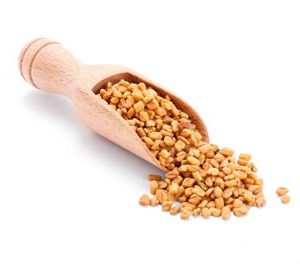Dill is a versatile herb that pairs well with a wide array of dishes, from soups and salads to stews. Originally cultivated in the eastern Mediterranean region and western Asia, this herb is an annual plant in the celery family. The leaves of dill, also known as dill weed, are aromatic and have wispy, feathery appearance, while its seeds are oval-flat and are often used as a spice because of their pungent flavor.
Growing dill at home is easy. This plant is not particular about soil pH or type, as long as it’s rich in organic matter. It grows well under full sun and is hardy against cold weather. Its size may vary according to type, but most reach a height of 18 to 40 inches. Dill leaves can be harvested any time, while the seeds are best harvested when they turn brown.
Growing dill at home requires little or no work – just a few basics. The seeds sprout quickly and can be sown directly because they don’t like being transplanted. They need at least six to eight hours of direct sunlight every day, in a low or protected area if possible, because the tall stalks can be knocked down in high winds.
Keep in mind that fresh dill leaves wilt quickly. To prolong their shelf life for up to a week, spritz the stems with a fine mist of water, wrap them in a paper towel and put them in a resealable bag. Store them in the vegetable drawer. Dill seeds, on the other hand, are best used within six months when stored in a cool, dry place away from direct sunlight.
Dried dill weed is widely available in grocery stores, but if you want to make the most out of this herb’s flavor, it’s best to use it fresh. Make sure that you don’t add dill leaves into your dish until just before it finishes cooking so you don’t lose the leaves’ flavor. Unlike the leaves, dill seeds become more aromatic when heated, so they’re often toasted in recipes.
Health Benefits of Dill
The medicinal use of dill dates back in writing to Egyptian medical manuscripts from 3000 B.C. This herb is traditionally used to help soothe colic and abdominal discomfort in infants. It also has diuretic, carminative and stomachic properties, making it useful for various digestive issues, such as intestinal spasms and flatulence. Its seeds may also be chewed for fresher breath.
According to a study published in Pharmacognosy Review, dill contains numerous phytochemicals that contribute to its pharmacological properties. Its stems, leaves and roots are found to be rich in flavonoids, tannins, terpenoids and cardiac glycosides. The essential oil extracted from the seeds contains high levels of phenolic acids, triterpenes and flavonoids, among others.
Dill seeds contain carvone and limonene, which are monoterpenes found to have chemopreventive properties. Limonene may also help dissolve cholesterol-containing gallstones and relieve heartburn symptoms. In terms of nutritional value, dill is an excellent source of vitamin A and C, riboflavin, calcium, magnesium, folate and manganese. To learn more about the nutrients that this herb has to offer, check out the nutrition facts table below:
| Dill Nutrition Facts
Serving Size: 3.5 ounces (100 grams), fresh |
||
| Amt. Per Serving |
% Daily Value* |
|
| Calories | 43 | |
| Total Fat | 1.12 g | |
| Saturated Fat | 0.06 g | |
| Trans Fat | ||
| Cholesterol | 0 mg | |
| Sodium | 61 mg | |
| Total Carbohydrates | 7.02 g | |
| Dietary Fiber | 2.1 g | |
| Sugar | 0 g | |
| Protein | 3.46 g | |
| Vitamin A386 mcg | Vitamin C | 85 mg |
| Calcium208 mcg | Iron | 6.59 mg |
Studies Done on Dill
According to one study published in the Journal of Tropical Medicine, dill has antioxidant, antihyperlipidemic, antihypercholesterolemic, cardioprotective and antistress properties. Researchers also highlighted this herb’s ability to help reduce your risk for diabetes and cardiovascular disease by lowering your levels of triglycerides, low-density lipoprotein (bad cholesterol) and glucose, while increasing your “good” high-density lipoprotein cholesterol levels.
In another study, this time published in the Journal of Ethnopharmacology, researchers evaluated the anticancer potential of dill seed extract and found that it may help induce apoptosis and cell cycle arrest against cancer cells found in the liver, making it potentially effective for the management of hepatocellular carcinoma and other forms of cancer.
Dill Fun Facts
Different cultures value dill for different reasons. In ancient Rome, this herb is seen as a symbol of good luck. Greeks, on the other hand, consider dill a sign of wealth. To ancient Egyptians, dill is a healing herb that can be used to ward off witches and increase libido.
Summary
Dill is an ancient herb with many benefits and uses, and not just in the kitchen. Modern medicine has found dill to contain a long list of vitamins and minerals, including vitamins A, C and B6, calcium, iron, manganese and folate, among others. Dill also contains monoterpenes, flavonoids and other phytochemicals, which account for its pharmacological properties.
Dill is easy to grow indoors or outdoors. To make the leaves last longer after they have been picked, spritz their stems with some water, wrap them loosely in a paper towel and put them in a resealable bag. You can store them in your fridge for up to a week. When cooking, it’s best to add dill leaves at the last minute, as they tend to lose flavor the longer they cook.







Reviews
There are no reviews yet.